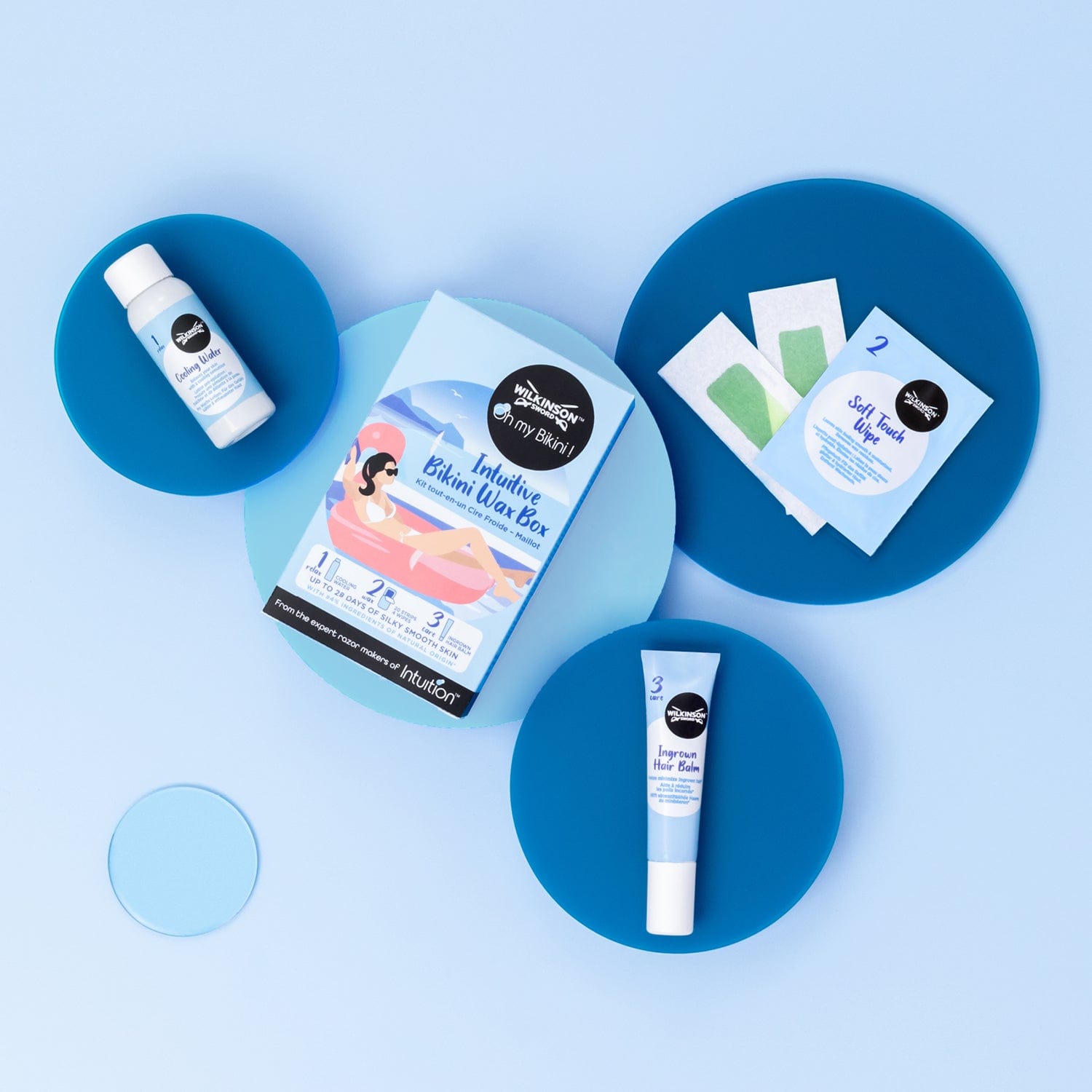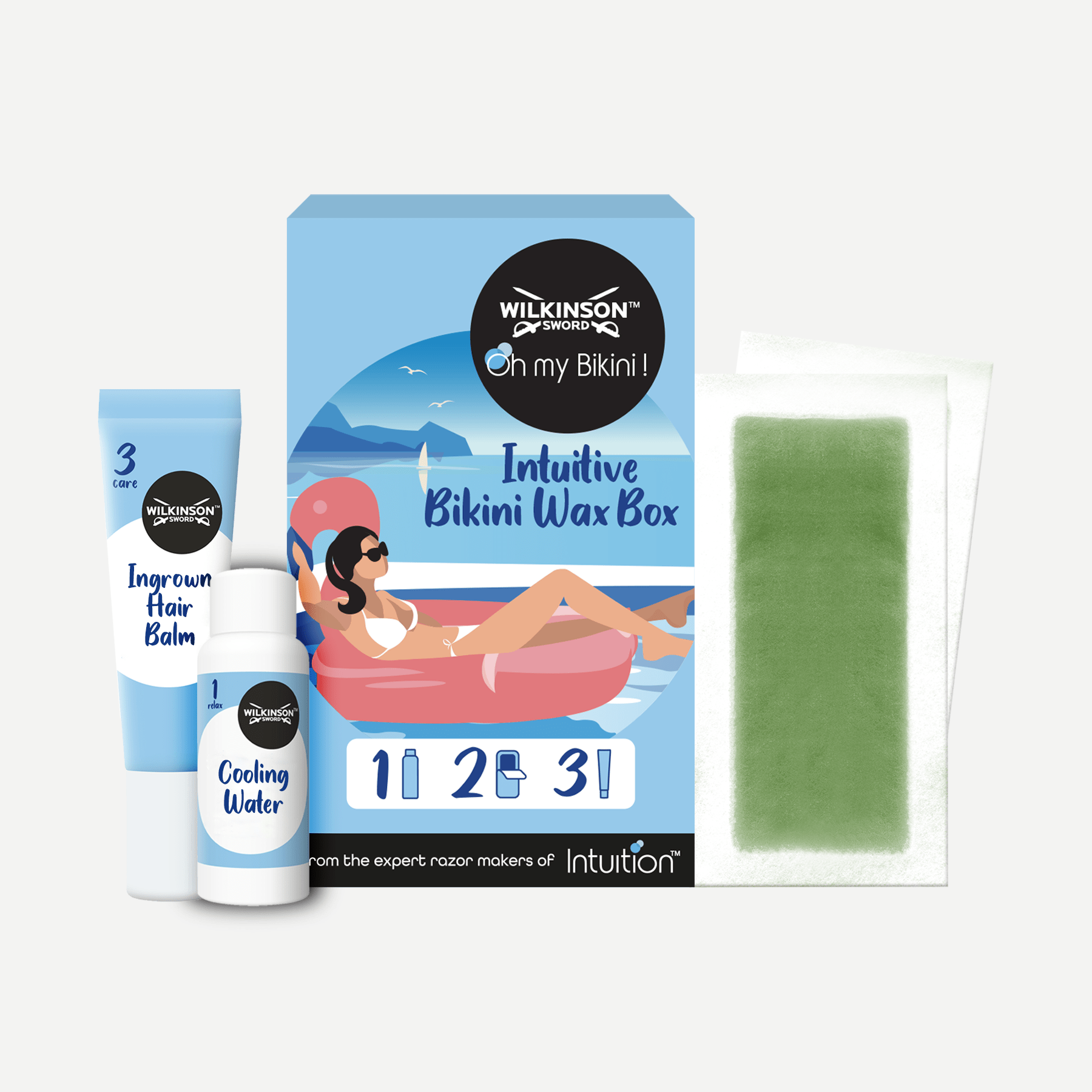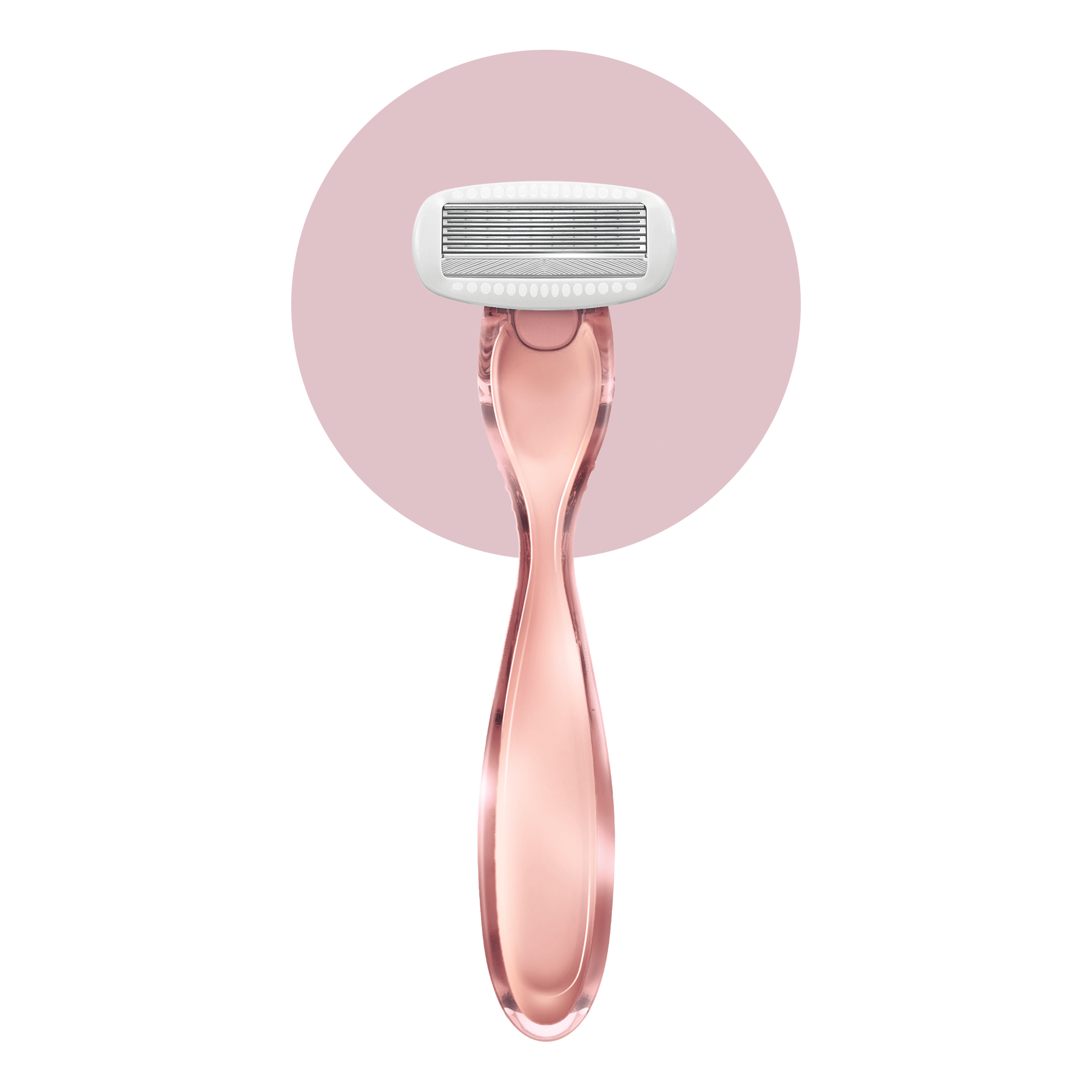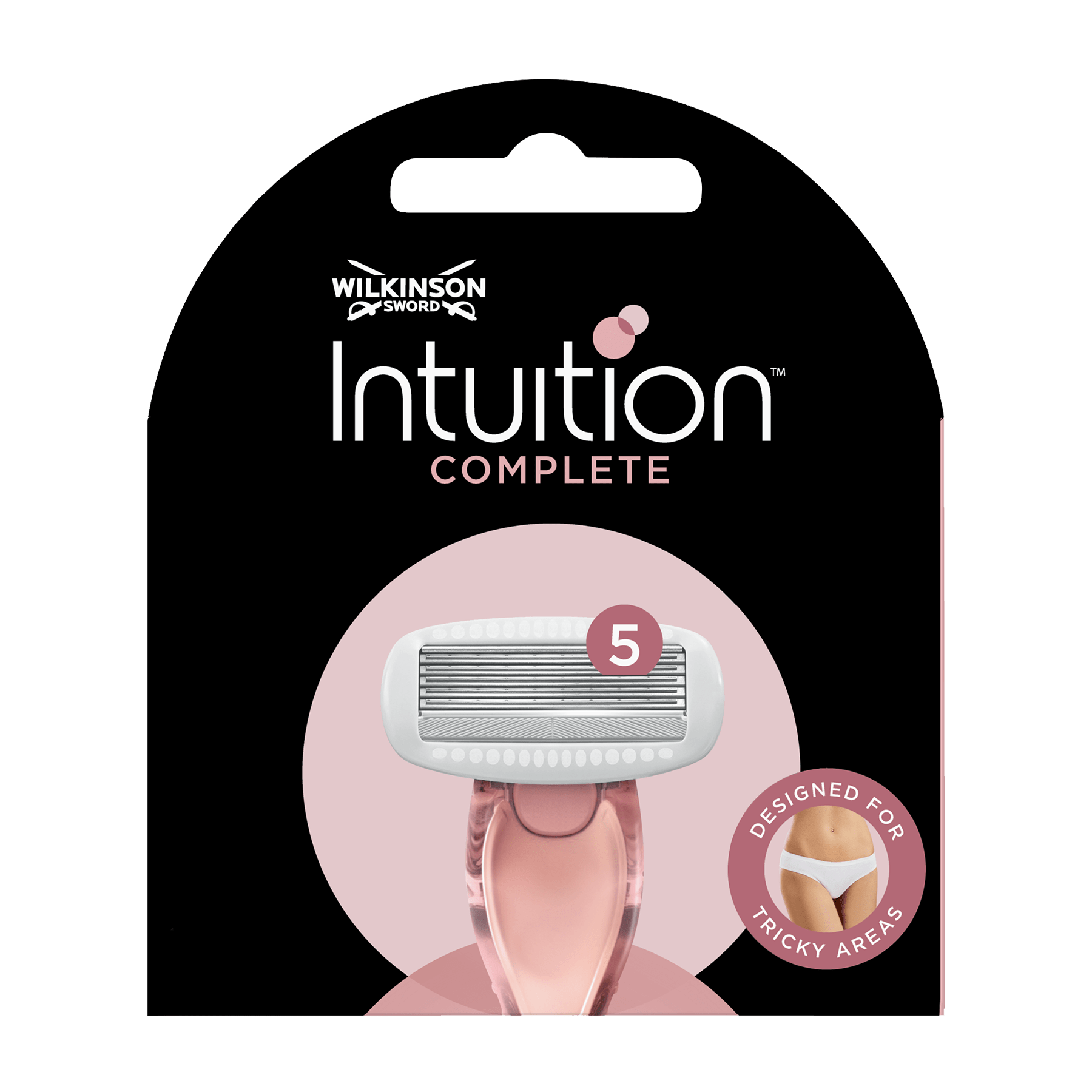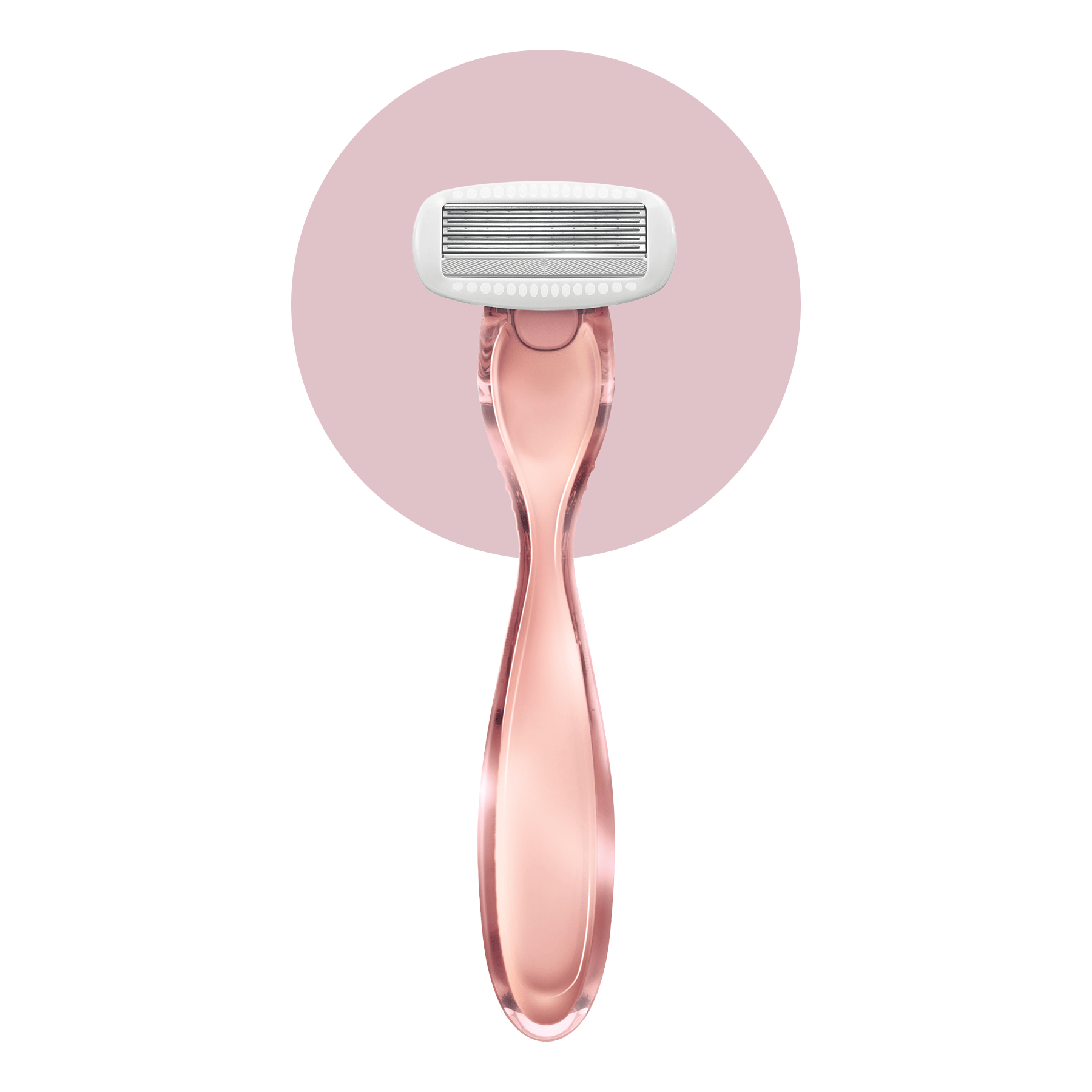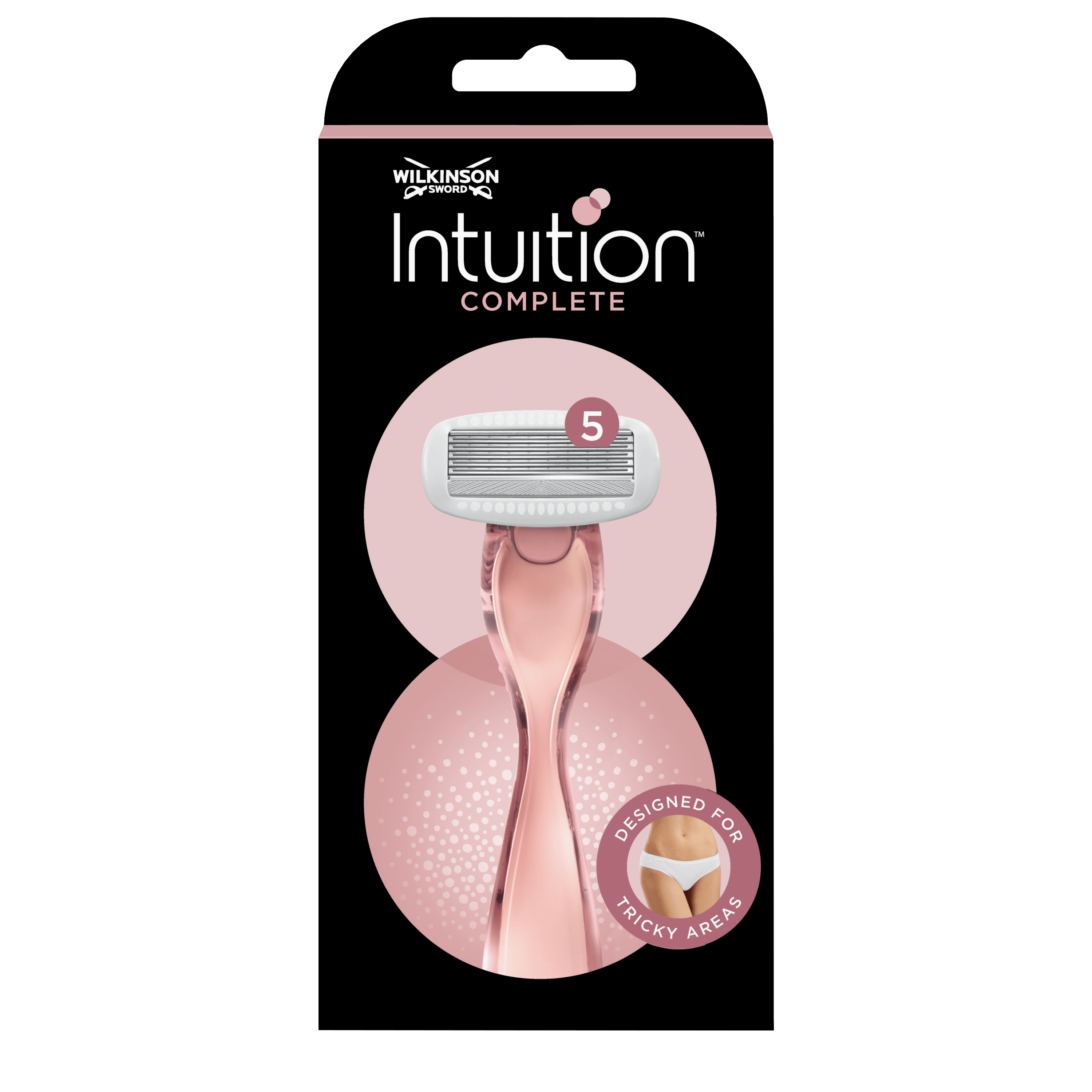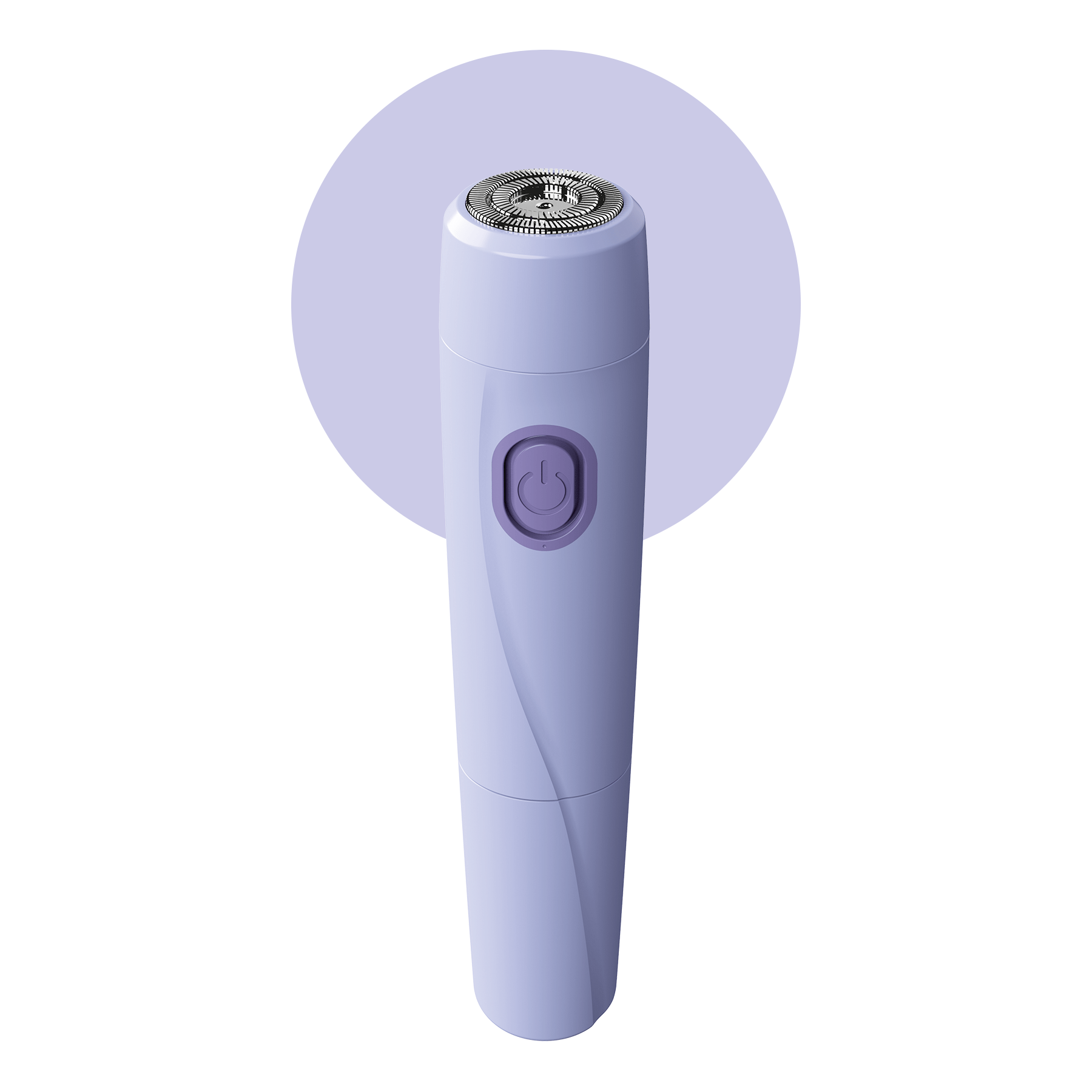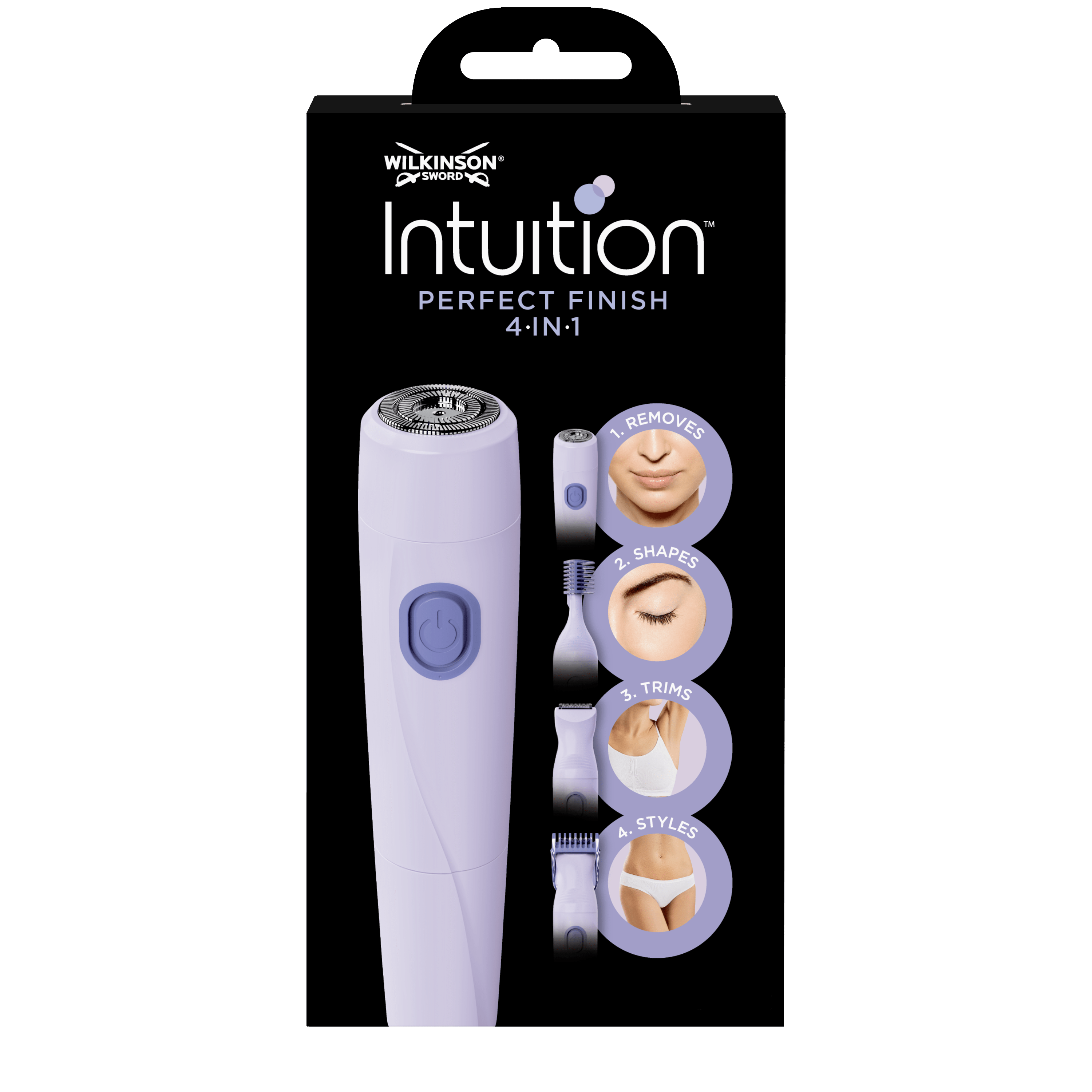
What is the best way to remove pubic hair to avoid pain?
Ben and Jerry, tea and biscuits, gin and tonic…some things are meant to be together — but not pubic hair removal and pain! If you’re cringing, thinking skin irritation is just part of the process, then read through our tips below to find the best way to remove pubic hair painlessly. Whether you like a neat and tidy finish or you prefer to remove the whole lot, there should be no reason for pain when maintaining your lady garden.
Removing pubic hair at home
Trimming
You can use a pair of small cuticle scissors to neaten up the edges and trim down the length for a tidy look. But you need to make sure that the scissors are clean, sharp and rust-free to avoid pulling the hair, injury or infection. And be careful where you point them…
For a safer bet and a more professional finish at home, take a look at our range of women’s bikini trimmers. You can use a handheld mirror and good lighting to make sure you don’t miss a spot.
It also helps to trim the hair down before you shave, preventing your razor from becoming clogged up quickly. Just remember that you’ll need to regularly trim the hair if you want to maintain the tidiness, so add it to your routine.
Shaving
Shaving is the quick and easy option for pubic hair removal, and it should be painless.
To avoid irritation, itchiness and soreness, run through these tips:
- Soak yourself in a hot bath or take a hot shower before shaving to soften the hairs
- Make sure your skin is moisturised, which can make it more resistant to razor burn
- Use a shaving cream so the blades glide over your skin
- Gently exfoliate a few times a week to shed any dead skin buildup and prevent ingrown hairs
- Use a sharp bikini razor with multiple blades to avoid going over the same area twice. Check out our razors for women that are specifically designed for the pubic region. Worried about forgetting to change your razor blades? Our women's razor subscription takes the stress away.
- Go slowly and focus on the task in hand; this is no time to be singing along to your bathroom playlist. That area of skin around your lady-parts is rather delicate, so pay close attention!
A 5-blade razor and trimmer in one, allowing you to trim and shave with one tool! 3 step routine for up to 28 days of smooth skin. No heat wax with pre & post care. Refill pack for Intuition Complete Razor. 5 blades. Slim razor head for bikini area
Intuition Complete Bikini Razor & Trimmer
Intuitive Bikini Wax Box
Intuition Complete Razor Blades
Waxing
While shaving is quickest and easiest for everyday, if you’re looking for a longer-lasting finish before a holiday, you can buy bikini wax strips. You simply stick the strip down onto the area of hair you want to remove and then pull away sharply against the growth, pulling multiple hairs from the follicles all at once. A word of warning: be careful where you lay the edges of that highly sticky strip; you need to avoid your hoo-ha or there will be a fuss.
We aren’t going to pretend this won’t hurt. It does for a second. And then afterwards the skin is more likely to come up in angry red bumps across your v-zone for a couple of days. To soothe the skin afterwards, gently apply some baby oil with some cotton wool — this will also serve to remove any sticky residue left over by the wax.
Although waxing is clearly going to be painful, the results last longer than trimming or shaving, so it remains one of the best ways to get rid of hair along the bikini line.
Hair removal creams
Hair removal creams are pretty potent, because they contain chemicals that break down the hair proteins, destroying the base of the hair. This allows you to wipe the hair away when you remove the cream after a set time. The process itself is pain-free, but the creams use some powerful chemicals which are deemed safe to use, but can irritate sensitive skin. You must test the cream on a small area of skin before you start to make sure that you don’t have an allergic reaction to any of the ingredients.
Tweezing
Tweezing pulls the pubic hair straight out of the hair follicle, but unlike waxing, you’re only removing one hair at a time, so fewer sharp intakes of air and hold-your-breath moments. For the odd wayward hair, tweezers are handy, but you can’t remove larger areas of hair this way (well, you can, but you’ll be there a fair while…).
Ensure the tweezers are kept clean to avoid infection and be careful to pull the hair itself and not your skin. If you need to tweeze, do so after a hot bath or shower so that the base of the hair is softer.
Getting your pubic hair removed professionally
Waxing
Home waxing strips are cost-effective, but if you want a professional finish, go to a salon. There are many benefits to getting a professional wax:
- It’s far easier for a skilled waxing therapist to see areas out of your sight
- The salon wax is a higher quality than home waxing kits so it’ll really grip the hair for a quicker result and less skin aggravation
- The wax acts as an exfoliator, removing dead skin cells and helping to prevent ingrown hairs
- There’s no mess and stickiness for you to clear up
- Pain is minimised and bruising is avoided as a professional can see the direction of hair growth more clearly
- They’ll be no hairs remaining in places you don’t want them to be (hairs that have escaped the wax are frustrating as the area will grow back patchy and at different lengths)
Electrolysis
Electrolysis involves inserting a probe into the hair follicle and sending an electric current through it. This kills the hair root, and with multiple sessions (as dormant follicles may begin to grow hair between sessions), the hair is permanently removed, one hair follicle at a time.
The hair around the bikini line is coarse, so it’ll need more sessions than any other body area before it’s permanently removed. And there will be some pain and discomfort during the session. But you can take paracetamol beforehand and apply ice to the area afterwards.
It’s a bit of a faff to book sessions into your diary if you’re busy, and you have to be patient for the final result, but the hair removal is permanent.
Laser hair removal
It will certainly be a relief to know that you have laser-precision with this procedure when so close to ‘the goods’. Laser hair removal involves destroying hair follicles with a laser and heat.
This reduces hair regrowth (not permanent removal), so you’ll need laser hair removal sessions every 6–8 weeks to stay baby-soft and smooth.
As for pain, well, laser hair removal is said to be more painful along the bikini line due to the sensitivity of that area of skin, but it’s similar to waxing pain. Some people are given a topical anaesthetic to minimise discomfort.
Which method is least painful?
Shaving is the best way to get rid of pubic hair at home without pain, while trimming the hair at home is a painless method for a tidy-up. With the right tools and advice, shaving should be pain-free. And treating yourself to a bikini trimmer will make trimming a breeze.
The other methods all involve removing the entire hair from the root for a longer-lasting result, but one which will always be a bit ouchy. Even getting out your tweezers for the odd hair might seem harmless, but next time swap the tweezers for your razor and some shaving gel to remove those stray hairs. This is because plucking hairs can traumatise the follicle, causing scar tissue to build-up around the pore.
When considering a professional, long-term hair removal solution, electrolysis is less painful than laser hair removal, with less risk of an adverse reaction. And there is no recovery time needed for electrolysis, whereas laser hair removal can cause swelling, skin discoloration, blisters, scarring and skin redness. Laser removal will also need more aftercare, sometimes including a steroid cream or over-the-counter pain relief.
Risks and solutions
If your skin is feeling sore down below after a hair removal procedure, then make sure you wear some loose-fitting clothing for a few hours and avoid tight underwear — you don’t want to aggravate the area further. Here are some potential risks and some handy solutions:
- An infected ingrown hair — if you’ve accidentally waxed against the direction the hair grows in, gently place a warm compress and then apply antiseptic cream
- A rash — if you skipped the shaving cream, you shaved against the grain or your razor is blunt — put some hydrocortisone cream on the rash and moisturise the area regularly
- A cut — if you get a razor cut when shaving while distracted, press a cotton wool pad to the cut to stop it bleeding and dab on some antiseptic cream
- Inflamed skin — if your skin is sore post-wax, put a cold flannel on the area then dab some topical aloe vera or apply a flannel soaked in cold milk (the lactic acid in the milk is a natural anti-inflammatory)
- Itchy skin — itchy skin post-shave is often due to dry skin. Splash the area with cold water, pat dry and gently apply moisturiser
Choosing your method of hair removal depends on personal preference. Many people mix it up according to how they feel that day, the time they have and the result they want. But there are ways in which you can minimise discomfort, whether that’s in a salon or at home.
Overall, shaving remains the best way to get rid of pubic hair at home without pain. Take a look at our blog post for more tips on shaving your bikini line and never again assume that pubic hair removal needs to be painful.


